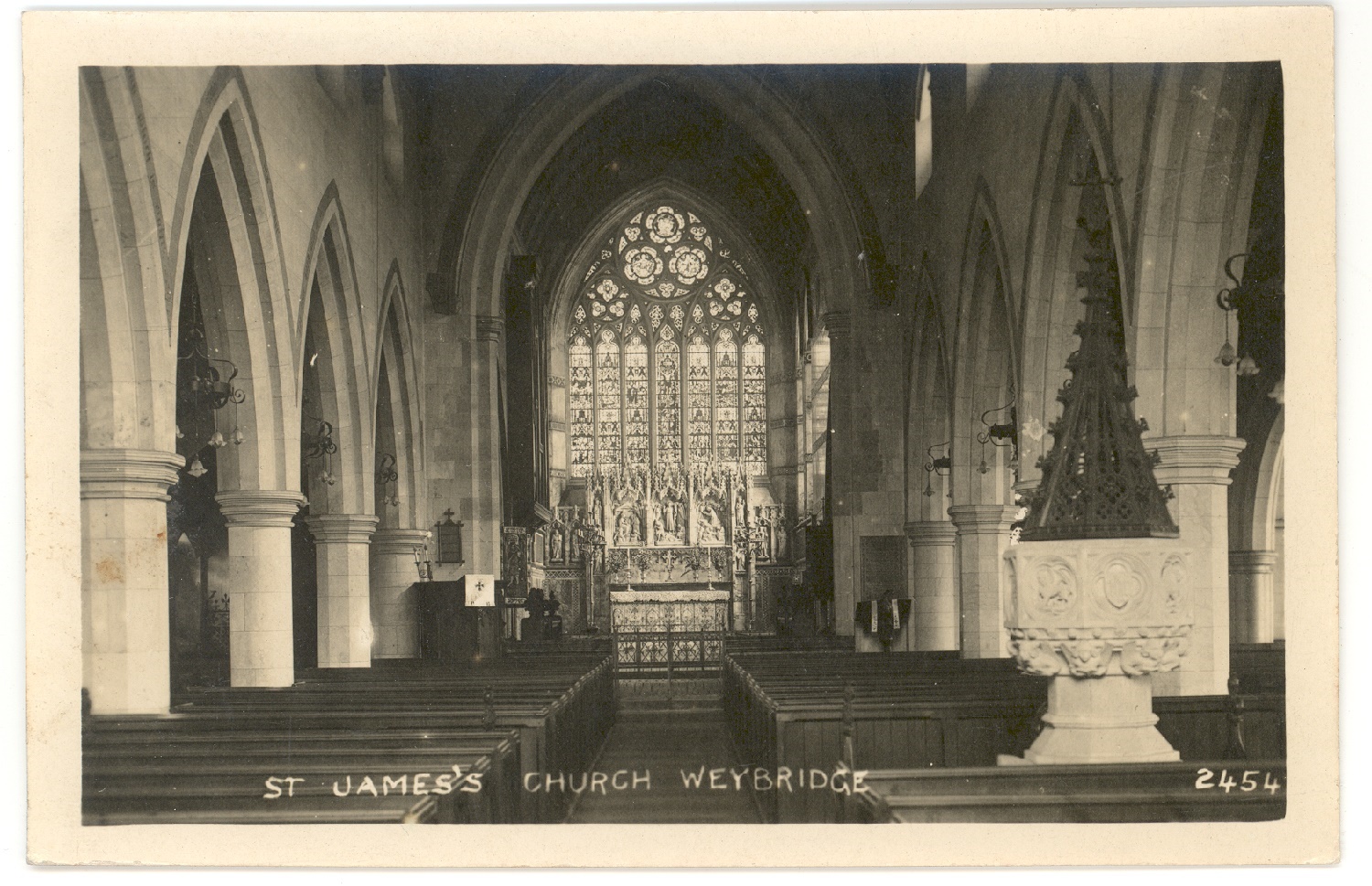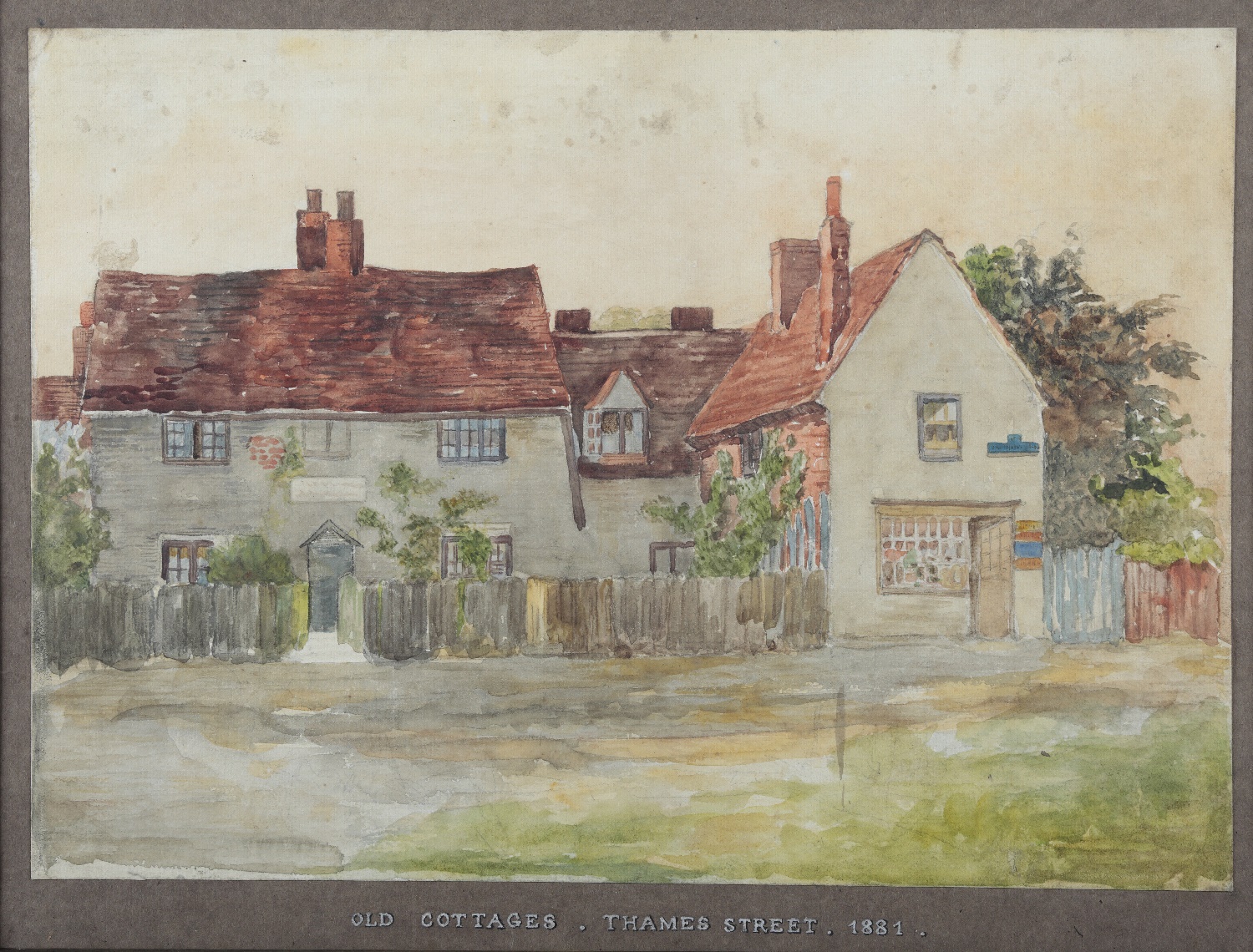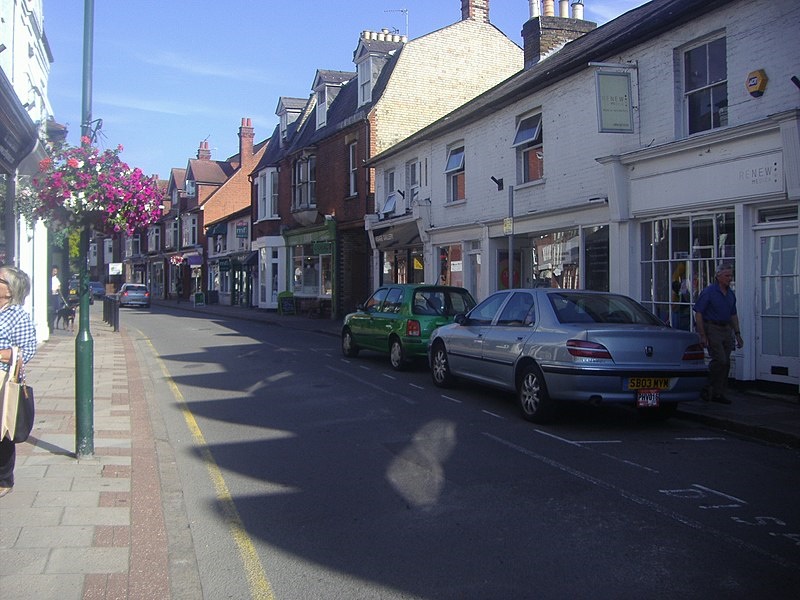Explore the latest news and find out what's on this month
Explore our learning offer for schools, families and community groups
Uncover the rich history of Elmbridge with our latest online exhibitions
Want to discover more about your local area?
Explore the latest news and find out what's on this month
Explore our learning offer for schools, families and community groups
Uncover the rich history of Elmbridge with our latest online exhibitions
Want to discover more about your local area?
 Interior of St James' Church, Weybridge
Interior of St James' Church, Weybridge
St James’ Church has been a key landmark of Weybridge for 175 years. It was built in 1848 and was the work of architect John Loughborough Pearson who went onto design Truro Cathedral.
There are many architectural features to admire in this historic building, but have you ever noticed the beautiful design of the East window? This was the work of Charles Hardgrave and Ada Currey, as part of the enlarging of the chancel in 1889.
Visit the The Parish Church of St James Weybridge to discover more about the history of this local landmark and even book a guided tour!
 Image of Old Cottages, Thames Street
Image of Old Cottages, Thames Street
Ada Currey was well known as a local Sunday school teacher but she was also a talented watercolourist and member of the British Society of Artists. Elmbridge Museum is lucky to hold several of her paintings within its collection.
Nature and religion were key to Ada Currey’s work and many of the pieces in the museum are beautiful studies of buildings, exploring the relationship between nature and stonework.
There isn’t much recorded of Ada Currey’s life. We know that she designed glass and mosaics as an employee of Messrs J Powell of Whitefriars, a company renowned for their work with stained glass and churches. Currey worked on projects as far as Ireland, France and Scotland, during a period of high demand for stained glass.
Her watercolours offer a personal insight into her passion for nature and the local area of Weybridge, as well as the importance of St James’ Church in her life.
Weybridge has transformed in the years since Ada Currey first depicted its fields and streets. Her paintings provide a tantalising glimpse into what the town used to look like. A few the locations in Currey's watercolours can still be recognised around Weybridge. Here is a watercolour of Portmore gates, as painted in 1910. These can be compared to the gates after their restoration in 1997.
 Baker Street, Weybridge
Baker Street, Weybridge
Several watercolours depict Weybridge from a distance, including the following pieces. These show atmospheric landscapes with far off views of churches. The following paintings refer to both the ‘Weybridge Church’ and the ‘Parish Church’, it is likely they feature St James’.
Currey manages to make these painting timeless and it’s easy to place yourself within the scene. The poplar tree at the forefront providing a scale reference of the artists’ distance to the church.